Indian Bronze Pilgrimage Statues
PRIMITIVE - Friday, March 31, 2017By Glen Joffe
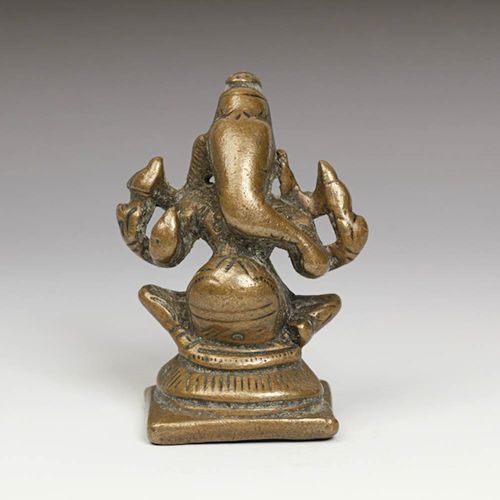 |
|
The history of bronze metal casting in India and Nepal goes back thousands of years and is shrouded in the mist of antiquity. Originally, miniature images of Hindu deities came into existence to fulfill the religious and spiritual needs of local villagers. It is theorized their small size – from 1 ½ to 6 inches in height – came about so they could be carried in a small bag for worship when villagers set out on a pilgrimage or journey, oftentimes to make an offering of the bronze sculpture itself.
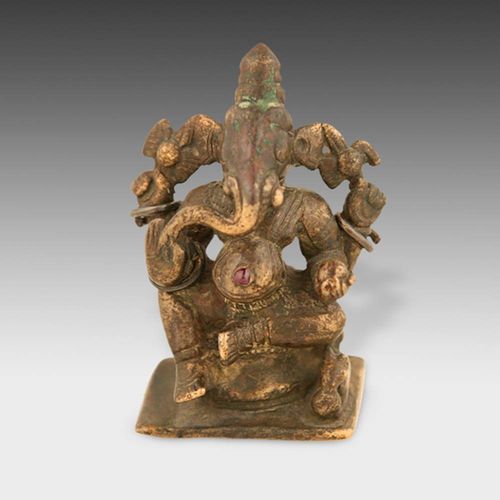 |
|
Most images were created using a process called lost wax. In this process the original sculpture is carved in bees wax or a wax like substance. A mold, usually made of earth, sand, and other metals is then fabricated to surround the original image. When molten metal is poured into the mold it melts away and replaces the original wax carving. The mold is then broken to reveal the sculpture. Lost wax casting can only result in a one-of-a-kind statue since the original carving and mold are destroyed in the process. In the towns and villages of India and Nepal the lost wax process has been practiced for many centuries. It was widely preferred by artisans because the ease of carving wax enabled them to interpret their artistic vision more dynamically.
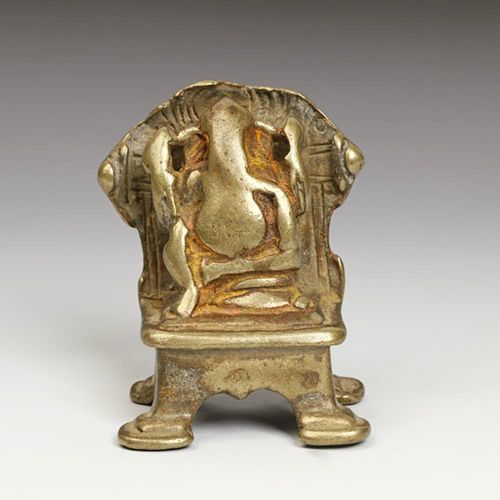 |
|
Sometimes, small bronze effigies were placed under a tree in a temple courtyard, in small shrines that dotted the countryside, in home altars, or in village temples. Once a statue was completed and deemed ready for installation a local priest (pujari) would fix an auspicious time and date for the installation or pilgrimage to begin. Most authentic pieces date from the 16 th through the mid-19 th centuries. These types of pieces depict a series of popular and important Hindu deities believed to have the capacity to solve problems and inspire solutions for devotees – or stated differently, to solve the problems of petitioners tasked with taking the deity on the pilgrimage.
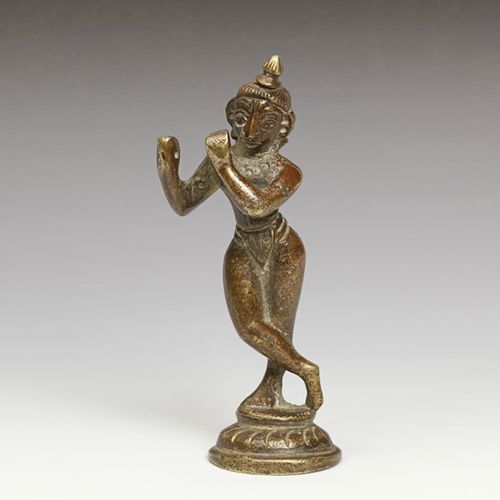 |
|
Of all deities appearing in miniature bronze form, Ganesh is one of the most popular. Ganesh has many roles – God of wisdom, commerce, and all the creative arts and sciences – but perhaps the most important is “the remover of obstacles.” To worship Ganesh is to harness the energy of communication and opportunity, a world where anything and everything is possible. Ganesh is also a highly protective deity, for just as easily as Ganesh can remove obstacles from someone’s path, Ganesh can place obstacles there as well. In this regard, Ganesh protects individuals by blocking harm, illness and misfortune. Ganesh frequently appears in small bronze form, even as small as pocket size. Yet, these small pilgrimage statues were deemed no less powerful than their larger counterparts.
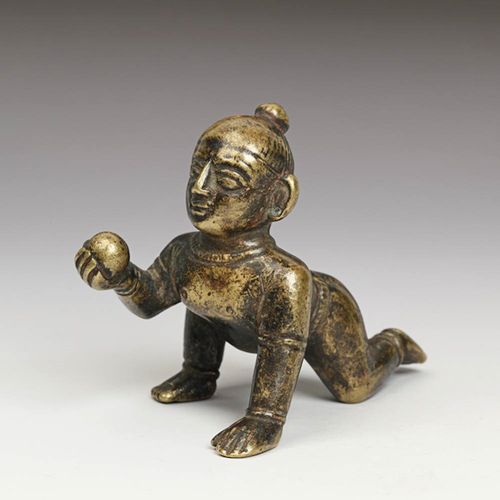 |
|
Another popular deity in Indian mythology and culture is Krishna, simply put, the God of Love. There are many stories surrounding Krishna. In one story, Krishna was a foster child who spent a happy life playing boyish pranks and seducing the gopis (cow girls) and other rustic maidens with his magic flute. This story and images of Krishna in this form show Krishna playing his flute. They illustrate love is for all people, not a select few; and Krishna’s love is a divine curative. Some pilgrimage statues of Krishna are known as Bala Krishna statues. Bala Krishna literally translates as Child Krishna. These statues are said to depict the purest form (as in childlike purity) of Krishna’s love and are said to be especially potent. Of these statues, some show Krishna crawling as a small child with a ball of butter in his hand. Others may show him dancing with the same ball of butter, which symbolizes divine knowledge. The point of these statues is that love is a cure for many problems petitioners may face.
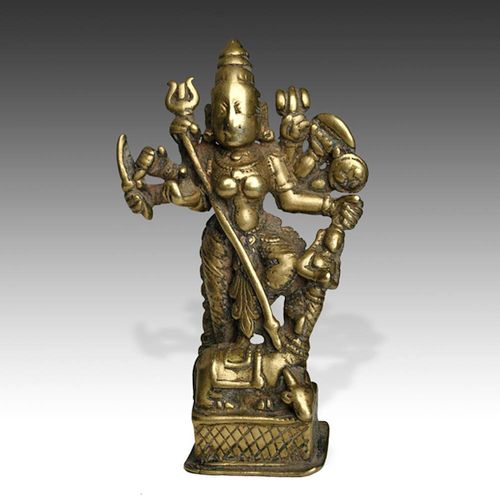 |
|
Devotees believe that pilgrimage statues operate for the benefit of the bearer, and based upon the deity depicted are best suited to resolve specific issues. Central to the creation and use of the statue is the idea that every god or goddess is believed to possess divine powers that upon request from a devotee they will dispense. Such statues are visual representations of the bearer’s commitment to the particular deity, who, pleased by such a show of faith, will be favorably disposed to comply with a request. Just as the deity’s power is eternal, so too is the power of the statue. Common solicitations included the fulfillment of a desire for children, immunity to illness, cures, prosperity, success in an enterprise, and the destruction of harmful circumstances.
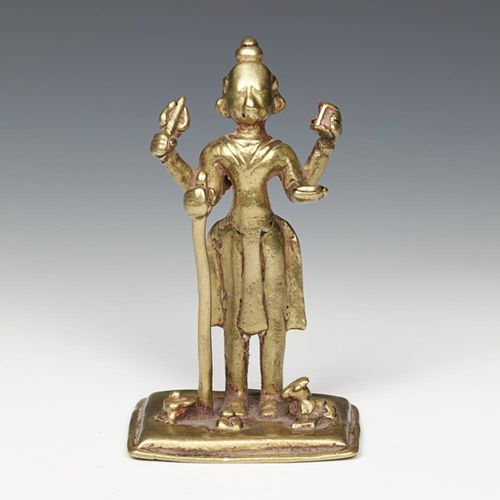 |
|
Another important deity to appear in “pilgrimage form” is Shiva, one of the three deities in the Hindu triad. The Hindu triad consists of Brahma, the creator of mankind; Vishnu, the preserver and protector of mankind; and Shiva, who absorbs the manifest universe back into its original form of pure potential then recreates it. All three deities have highly beneficial aspects. For example, if a person is ill and Shiva destroys the illness, it is an essentially beneficial act. In fact, Shiva can destroy anything that is not beneficial – especially anything negative - and in so doing bring good fortune to the devout. It is no wonder why Shiva is a popular deity depicted in these small bronze statues.
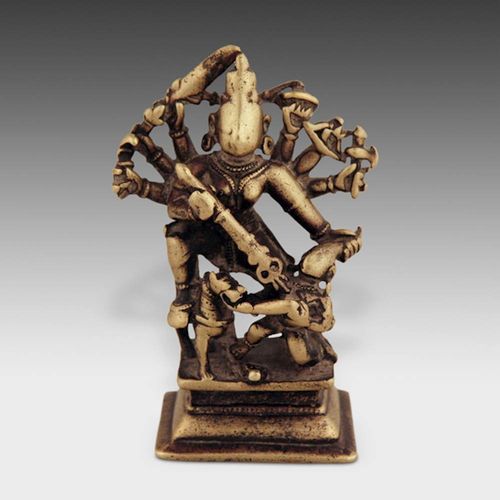 |
|
One could cover the entire Hindu pantheon of deities, which is quite large; but not all were cast as pilgrimage statues. Another popular deity made in this form was Durga. Durga is considered a form of the “feminine divine,” and although she is considered to be a warrior goddess fighting evil and demonic forces, she is also frequently benign, gentle and nurturing. In essence, she is the embodiment of feminine power – one might say motherhood – and can be invoked to resolve situations where this type of nurturing energy is required. You might say, she will fiercely protect any nurturing activity and promote the activity itself. It’s no wonder she appears in many pilgrimage statues, for devotion to her can help positive situations grow.
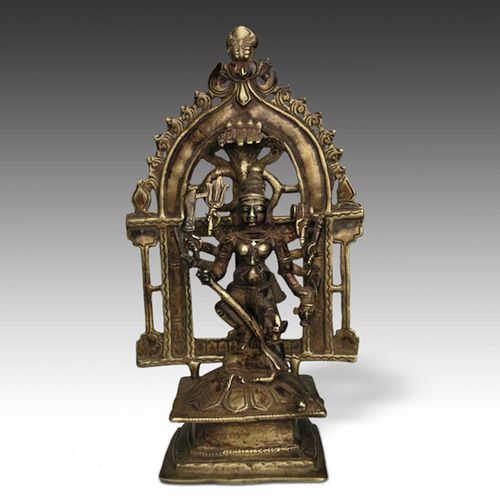 |
|
The flip side of Durga is Kali, yet another deity appearing in pilgrimage bronzes. Kali may be viewed as the wrathful form of Durga. She is known as the destroyer of evil forces and is called the divine protector. As the wrathful form of Durga she is invoked whenever nurturing or positive energy is threatened. Kali is frequently depicted holding a sword and a severed head. The sword was used to sever the head, which represents the elimination of ignorance and ego. As with just about all Hindu deities, Kali has other attributes appearing in sculptural form. There are simply too many attributes with all of these deities to address here. The main point to remember about Kali is she would be invoked in pilgrimage form for those seeking unfettered knowledge and to protect positive situations that could be materialized through nurturing energy.
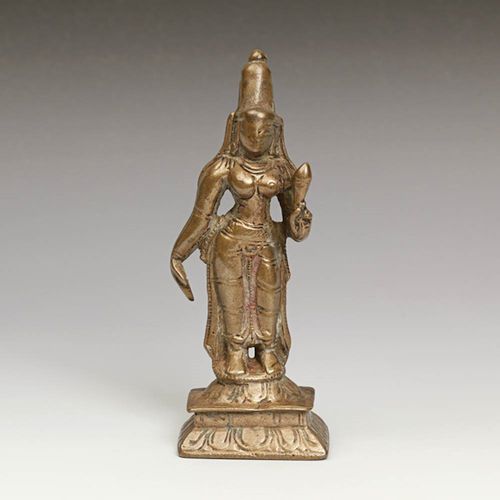 |
|
Need money? Did an unexpected obligation suddenly arise? Do you have a problem only money can solve? If so, better call on Lakshmi, the goddess of wealth, fortune and prosperity. However, Lakshmi is not just about financial wealth. She also is the vehicle to manifest abundance in all its forms; and riches can take many guises. Generally speaking, Lakshmi is invoked by those seeking to resolve problems with any form of prosperity. She is frequently shown standing on a lotus pedestal wearing flowing robes.
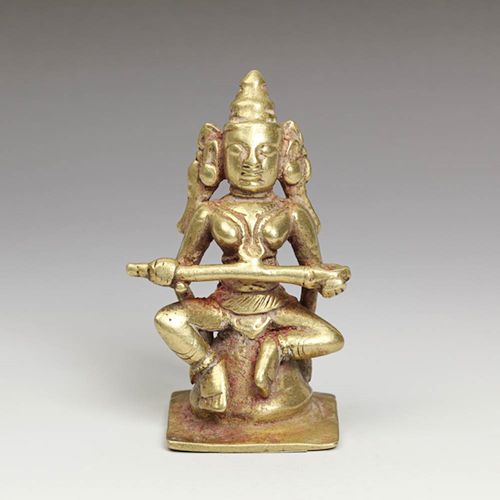 |
|
Finally, the goddess Saraswati also appears in pilgrimage form. Saraswati is the goddess of knowledge, learning, music and truth. Saraswati teaches truth is not subject to interpretation nor is it based on assumptions, limited information or incomplete evidence. It should not be confused with belief and cannot be substituted with plausibility, certainty or common sense. Holding a lute across her body, she sings truth is neutral until judgment is applied, and although sometimes elusive, may be uncovered through perseverance, reason, science and gentle reminders from her. Saraswati is invoked whenever situations arise where knowledge and truth must prevail.
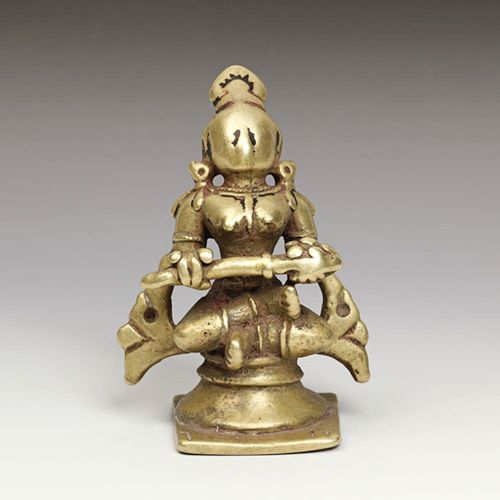 |
|
Pilgrimage bronzes can be viewed as the personification of prayer. In this regard, they are no different than their larger relatives. What they have in common is they represent a focal point for devotees to address their everyday needs and concerns as well as their desires for a better life, health, prosperity, love, knowledge, and ultimately, peace of mind. Hundreds of years ago devotees believed these petite pieces were powerful enough to grant their wishes, and since then very little has changed. These pieces remain potent reminders of the power of belief long after their pilgrimage has ended and they have found a new home.